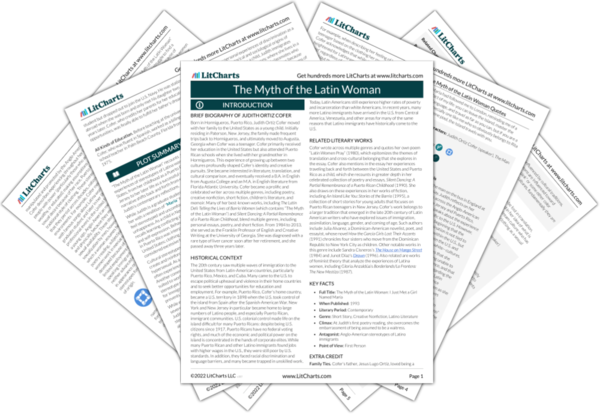Next
Summary
The Myth of the Latin Woman Study Guide |
Next
Summary
|
Welcome to the LitCharts study guide on Judith Ortiz Cofer's The Myth of the Latin Woman. Created by the original team behind SparkNotes, LitCharts are the world's best literature guides.

Family Ties. Cofer’s father, Jesus Lugo Ortíz, loved being a student but dropped out to join the U.S. Navy. He was stationed abroad when she was born and only met his daughter two years later. Cofer, who credits her parents for her educational opportunities, was finally able to fulfill her father’s dream.
All Kinds of Education. Before teaching at the university level, Cofer, who was fluent in Spanish, worked as a bilingual public school teacher in Palm Beach County, Florida from 1974 to 1975.